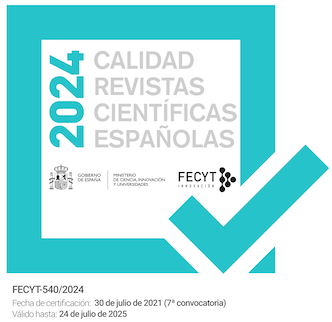Roberto Bolaño, Cervantes y Soldados de Salamina
DOI:
https://doi.org/10.30827/rl.v0i11.3755Keywords:
Cercas, Salamina, Bolaño, Cervantes, Self-fashioningAbstract
This article analyzes the role of Roberto Bolaño as a fictional character in Javier Cercas’ Soldados de Salamina. Through Roberto Bolaño’s identification with Miguel de Cervantes, the novel converts Bolaño in the archetypical figure of a modern novelist. The association of the Chilean author with Cervantes goes beyond the fictional discourse of Soldados de Salamina, since Bolaño himself shows in his works the influence of the Cervantine figure of a writer.Downloads
References
Amago, Samuel (2006). “Narrative Truth and Historical Truth in Javier Cercas’s Soldados de Salamina”. True Lies. Narrative Self-Consciousness in the Contemporary Spanish Novel. Lewisburg: Bucknell University Press, 144-165.
Andrew, Chris. “La experiencia episódica y la narrativa de Roberto Bolaño”. Faveron y Patriau, 53-71.
Bolaño, Roberto. “Discurso de Caracas”. Faveron y Patriau, 33-42.
Bolaño, Roberto (2009). 2666. Nueva York: Vintage.
Cercas, Javier (2001). Soldados de Salamina. Barcelona: Tusquets. Cervantes, Miguel de (1967). Obras completas. Ed. Ángel Valbuena Prat.Madrid: Aguilar.
Close, Anthony (2005). La concepción romántica del Quijote. Barcelona: Crítica.
De Piérola, José (2007). “El envés de la historia. Reconstrucción de la historia en Estrella distante de Roberto Bolaño y Soldados de Salamina de Javier Cercas”. Revista de Crítica Literaria Latinoamericana 33.65, 241-258.
Faverón Patriau, Gustavo y Edmundo Paz Soldán (2008). Ed. Bolaño salvaje. Barcelona: Candaya.
Hernández, Sonia y Marta Puig. “Conclusión: una entrevista inédita. Entrañable huraño”. Faveron y Patriau, 475-478.
Iwasaki, Fernando (2005). Neguijón. Madrid: Alfaguara.
Kundera, Milan (2000). The Art of The Novel. New York: HarperPerennial. Martín-Estudillo, Luis y Luis Bagué Quílez. “Hacia la literatura híbrida: Roberto Bolaño y la narrativa española contemporánea”. Faveron y Patriau, 447-471.
Payne, John (2004). “An Interview with Javier Cercas: Language, History and Memory in Soldados de Salamina”. International Journal of Iberian Studies 17.2, 117-124.
Pérez Reverte, Arturo (1995). “La fiel infantería”. Obra breve, 1. Madrid:
Alfaguara, 343-346.
Puig, Idoya (2009). “Verisimilitude, Self-Reflection and Humanity: Cervantine Features in Javier Cercas’s novels”. Tradition and Modernity. Cervantes’s Presence in Spanish Contemporary Literature. Oxford-New York: Peter Lang, 79-96.
Rodríguez Mansilla, Fernando (2009). “¿La cueva de Montesinos en Los detectives salvajes (Los detectives salvajes, II, 20)?”. Mnemósine 2, 6-7.
Satorras Pons, Alicia (2003). “Soldados de Salamina de Javier Cercas, reflexiones sobre los héroes”. Revista Hispánica Moderna 56, 227-244.
Trelles, Diego (2005). “El lector como detective en Los detectives salvajes de Roberto Bolaño”. Hispamérica 34, 141-151.
Vilar, Pierre (1986). La guerra civil española. Barcelona: Crítica.
Downloads
Published
How to Cite
Issue
Section
License
Revista Letral is an open access journal under a Creative Commons Atribución-NoComercial 4.0 license.
The works published in this journal may be reused, distributed and publicly presented for non-commercial purposes, provided that: cite the authorship and the original source of the publication (journal, publisher and URL of the work).
We strongly recommended you to share our published articles in social and scientific networks, institutional and public repositories, personal or institutional websites, blogs, Google Scholar, ORCID, ResearchID, ScopusID, etc.
The journal allow the author(s) to hold the copyright and to retain publishing rights without restrictions.
We are completely free, both for readers and authors.














